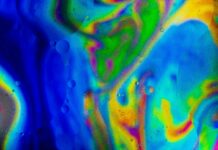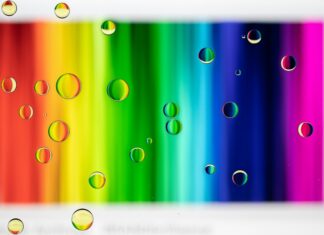The nasal septum is a vital structure within the nose, serving as the dividing wall that separates the two nasal cavities. Composed of bone and cartilage, the nasal septum plays a crucial role in maintaining the structure and function of the nose. It not only provides support for the nasal framework but also contributes to the efficient flow of air during breathing.
Located in the midline of the nose, the nasal septum is responsible for creating symmetry and balance in the nasal passages. Its position and shape influence the overall appearance of the nose, making it an essential consideration in rhinoplasty and nasal surgery procedures. Moreover, the nasal septum’s integrity is essential for maintaining optimal nasal function, such as airflow, smell perception, and the humidification of inhaled air.
The nasal septum consists of two main components: the anterior part, made of flexible cartilage, and the posterior part, composed of bone. This combination of cartilage and bone provides stability and flexibility to the nasal septum, allowing it to withstand external forces while still accommodating the movement of the nose during breathing.
Within the nasal septum lies a network of blood vessels that supply oxygen and nutrients to the nasal tissues. These blood vessels play a critical role in maintaining the health and vitality of the nasal septum. Any damage or injury to these blood vessels can lead to nasal bleeding, a common concern in cases of trauma or surgery involving the nasal area.
The nasal septum’s function goes beyond mere anatomical division. It serves as an essential component of the nose’s airway system, facilitating the flow of air during inhalation and exhalation. The smooth passage of air through the nasal septum is essential for efficient respiration, as the nose helps filter, warm, and humidify the air before it reaches the lungs.
In some individuals, the nasal septum may deviate from its central position, leading to a condition known as a deviated septum. A deviated septum can result from natural variations in nasal development or be caused by trauma, such as a nasal injury. Depending on the degree of deviation, a deviated septum may cause nasal obstruction, leading to difficulty breathing, snoring, and recurrent sinus infections.
Treatment for a deviated septum may involve surgical intervention, such as septoplasty, a procedure aimed at repositioning the nasal septum to improve airflow and alleviate breathing difficulties. Septoplasty is a common surgical option to address a deviated septum and restore nasal function.
Additionally, the nasal septum may also be affected by various medical conditions, such as nasal polyps or tumors. These growths can exert pressure on the nasal septum, leading to further deviation and nasal obstruction. Management of such conditions may require medical treatment or, in some cases, surgical removal.
In conclusion, the nasal septum plays a vital role in maintaining the structural integrity and function of the nose. As the dividing wall between the two nasal cavities, it ensures the symmetry and balance of the nose while facilitating efficient airflow during breathing. While the nasal septum’s normal function may go unnoticed in everyday life, any deviation or impairment can lead to significant issues, such as nasal obstruction and breathing difficulties. Understanding the anatomy and function of the nasal septum is essential for medical professionals in diagnosing and managing nasal conditions and providing optimal care for patients’ nasal health.
Dividing Wall:
The nasal septum serves as the dividing wall that separates the two nasal cavities, providing symmetry and balance to the nose’s overall structure.
Composed of Bone and Cartilage:
The nasal septum is made up of a combination of bone and cartilage, providing stability and flexibility to support the nose’s function.
Airway Function:
The nasal septum plays a crucial role in the efficient flow of air during breathing, contributing to respiratory functions such as filtering, warming, and humidifying inhaled air.
Blood Vessels:
Within the nasal septum, a network of blood vessels supplies oxygen and nutrients to the nasal tissues, supporting the nasal septum’s health and vitality.
Deviated Septum:
Some individuals may have a deviated septum, where the nasal septum is displaced from its central position, leading to breathing difficulties and nasal obstruction.
Septoplasty:
Septoplasty is a common surgical procedure used to address a deviated septum, repositioning the nasal septum to improve airflow and alleviate breathing problems.
Medical Conditions:
The nasal septum may be affected by various medical conditions, such as nasal polyps or tumors, which can exert pressure on the septum and lead to further deviation.
Trauma and Injury:
Trauma or injury to the nose can also cause the nasal septum to deviate from its normal position, potentially requiring medical intervention for correction.
Sinus Infections:
A deviated septum can contribute to recurrent sinus infections, as it may obstruct the sinuses’ drainage pathways and lead to sinusitis.
Nasal Surgery:
The nasal septum is a critical consideration in rhinoplasty and other nasal surgery procedures, as its position and shape influence the overall appearance and function of the nose.
The nasal septum is an intricate and remarkable structure that plays a significant role in the overall health and function of the respiratory system. Beyond its functional aspects, the nasal septum also holds cultural and historical significance in various societies.
In many cultures, the nose is considered a prominent facial feature and a symbol of identity. The shape and size of the nose, including the nasal septum, can vary greatly among individuals and ethnic groups. In some cultures, a particular nasal shape may be admired and seen as a sign of beauty or cultural identity.
In ancient civilizations, the nose held spiritual and religious significance. In ancient Egypt, for instance, the nose was associated with the god Osiris and was believed to be a symbol of life and resurrection. The Egyptians also developed advanced medical knowledge, and ancient surgical techniques, including procedures to repair nasal deformities, have been found in historical records.
The nasal septum has also been a subject of interest in art and literature throughout history. Artists have often depicted the human face in their works, paying attention to the nose’s shape and proportions, including the position of the nasal septum. In literature, the nose has been used as a metaphor or symbol to convey various emotions and traits, such as arrogance, curiosity, or sensitivity.
In the field of anthropology, the study of the nasal septum’s variation among different populations has provided valuable insights into human evolution and migration patterns. Researchers can use craniofacial measurements, including nasal septum angles, to infer the ancestral origins of human remains and track ancient populations’ movements.
Furthermore, the nasal septum has practical implications in various medical fields. In forensic science, the nasal septum’s unique features can be used for identifying individuals through facial recognition. Additionally, craniofacial surgeons and maxillofacial specialists carefully consider the nasal septum’s position and shape when performing facial reconstructive surgeries.
The nasal septum’s health can also be influenced by various lifestyle factors. Chronic nasal congestion due to allergies or recurrent colds can lead to irritation and inflammation of the nasal septum, potentially causing discomfort and breathing difficulties. Proper nasal hygiene and environmental management can help mitigate these issues.
Moreover, nasal septum piercings have become a popular form of self-expression in modern culture. Individuals may choose to adorn their nasal septum with various types of jewelry, such as rings or studs, as a fashion statement or as part of their cultural or spiritual practices.
In some societies, the nasal septum has been modified or adorned for cultural or traditional reasons. Nasal septum piercings have been practiced in various indigenous cultures as part of rituals, coming-of-age ceremonies, or as a symbol of status or affiliation.
In traditional Indian culture, a practice called “Nath” involves piercing the nasal septum and wearing a piece of jewelry, typically a nose ring or stud. The Nath holds cultural significance and is often associated with marriage or the transition to womanhood. Similarly, various indigenous tribes in Africa and South America have their traditions of nasal septum piercing, reflecting their cultural heritage.
As with any body modification, there are potential risks associated with nasal septum piercings, such as infections, scarring, or adverse reactions to the jewelry materials. Proper aftercare and hygiene are essential to minimize these risks and ensure the well-being of those with nasal septum piercings.
In conclusion, the nasal septum is much more than a functional anatomical structure. Its significance extends to cultural, historical, and artistic realms, reflecting the human fascination with the human face and its various features. Throughout history and across different societies, the nose and nasal septum have held spiritual, cultural, and aesthetic significance. In modern times, the nasal septum continues to be a subject of interest in various fields, including anthropology, forensics, and medicine. As we continue to explore the complexities of human anatomy and cultural practices, the nasal septum remains a symbol of diversity, identity, and self-expression.


















